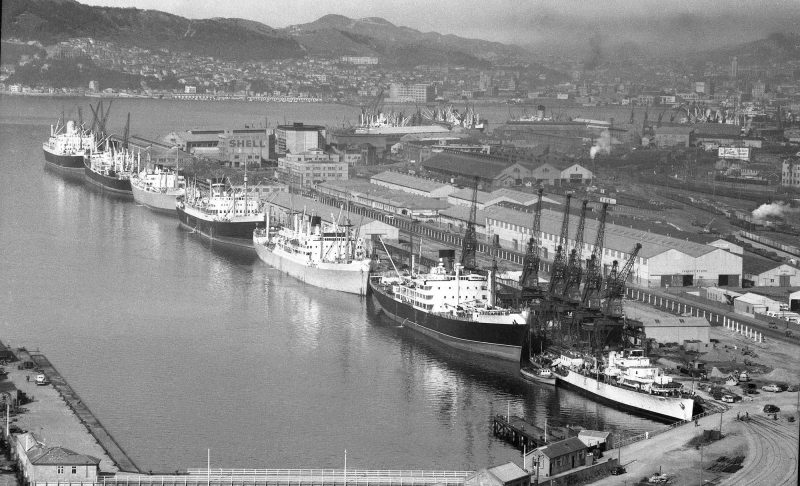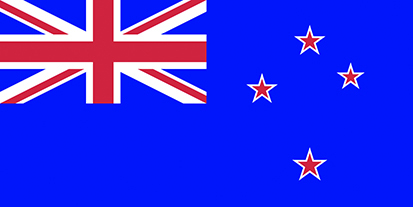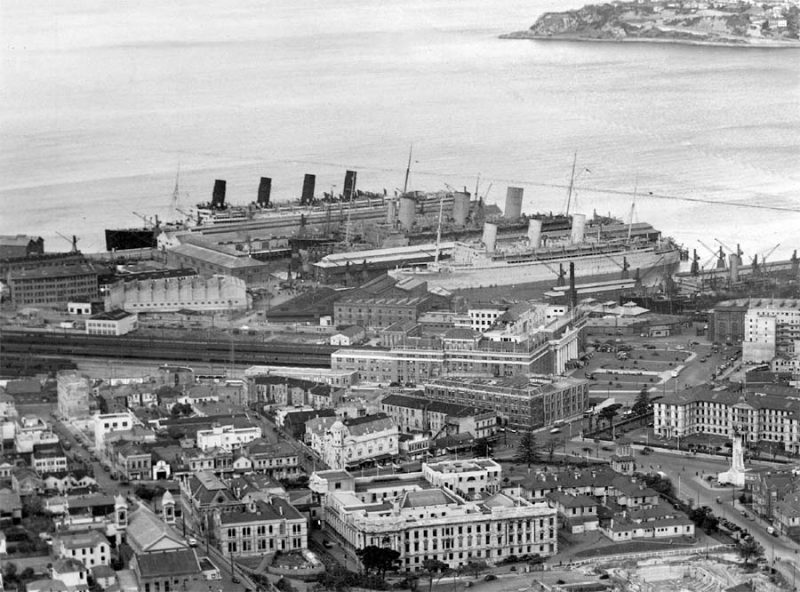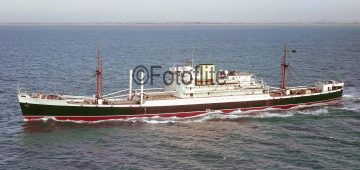

 Wellington is the capital city and the second most populous city in New Zealand. The Port of Wellington is located on a natural scenic harbour with green hills surrounding Wellington Bay, which has tiered suburbs of colonial villas stretching up to the top of the nearby mountains. These include Mount Kaukau at 445 metres elevation, Mount Victoria at 196 metres, Mount Albert at 178 metres and Mount Alfred at 122 metres elevation. Mount Cook is named in honour of British explorer Capt. James Cook, who visited the area during three worldwide voyages of discovery in the 1770s, and is the name of both a nearby hill and a suburb of Wellington. Lambton Harbour, Lambton Quay and Clyde Quay Wharf are located on an arm of Wellington Bay, and are reached on arrival by a sharp turn to port around the Miramar peninsula.
Wellington is the capital city and the second most populous city in New Zealand. The Port of Wellington is located on a natural scenic harbour with green hills surrounding Wellington Bay, which has tiered suburbs of colonial villas stretching up to the top of the nearby mountains. These include Mount Kaukau at 445 metres elevation, Mount Victoria at 196 metres, Mount Albert at 178 metres and Mount Alfred at 122 metres elevation. Mount Cook is named in honour of British explorer Capt. James Cook, who visited the area during three worldwide voyages of discovery in the 1770s, and is the name of both a nearby hill and a suburb of Wellington. Lambton Harbour, Lambton Quay and Clyde Quay Wharf are located on an arm of Wellington Bay, and are reached on arrival by a sharp turn to port around the Miramar peninsula.
The outer harbour is reached through a small entrance from the Cook Strait between the North and South Islands. Wellington Bay has an area of sheltered waterway of 20,000 acres with an average depth of between seven and nine fathoms. The Port of Wellington is thus endowed with many natural advantages, and has grown to handle well over ten million tonnes of cargo per annum, as well as being a chief distribution centre. Dairy produce, wool, meat and fruit are important traffic as well as the newly developing industries in the Hutt valley including car assembly, rubber processing, and oil refineries.
History Of Wellington
Kupe, the great chief of the Hawaiki tribe of Maoris, arrived in the district in the year 1280 AD from the north and explored the whole area, giving the name Whanganui a Tara to the area. The Maoris are believed to have arrived in New Zealand from Polynesia between 1000 AD and 1200 AD, with the latter date as the more likely. European settlement began with the arrival of an advance party of the New Zealand Company on the sailing ship Tory on 20th September 1839, followed by 140 settlers on the Aurora on 22nd January 1840. The New Zealand Parliament met for the first time on a temporary basis at Wellington on 7th July 1862, becoming permanent on 26th July 1865. The merging of the many smaller boroughs in the district was begun in 1903, and Greater Metropolitan Wellington grew to a population of 114,950 people in 1935 spread over 24.5 square miles. The present population of Greater Metropolitan Wellington is now around 440,000 people, much smaller than that of Auckland.
The whole area is subject to natural earthquakes with several experienced in 1848 that caused serious damage to the original settlers’ homes. In 1865 an earthquake estimated to have been over 8.2 on the Richter scale raised land out of the harbour and created a tidal swamp and moved the small existing port a further 150 metres inland. The settlers had built their homes at Petone on the north side of Wellington harbour on a flat area at the mouth of the Hutt river, but the area was very wet and prone to flooding and thus they moved to the present site of Wellington. Wellington continues to rest on a number of fault lines that run through the centre of the city, but in spite of this it became the capital of New Zealand in 1865 in place of Auckland, which William Hobson had made the capital in 1841. Wellington has a central location between the North and South Islands, and the population began to rise from the 4,900 settlers in 1865.

The House of Parliament was designed in the classic ‘Renaissance’ style to form a large building in the shape of a parallelogram 365 feet by 243 feet. It was built in brick and faced with marble from quarries in the Nelson area and completed in the late 1930s to replace a much smaller wooden building destroyed by fire in 1907. Wellington has the Highest Court in the country, the Supreme Court, and the historic High Court building has now been restored and enlarged for this use. Government House, the official residence of the Governor-General, is in Newtown opposite the Basin Reserve. Premier House, the official residence of the Prime Minister, is in Thorndon on Tinakori Road. The New Zealand Parliament is the political centre of New Zealand with head offices of all of the Government Ministries and Departments. The vast majority of the foreign diplomatic embassies are also spread out over the area. The War Memorial of the city, honouring both the dead of two World Wars, is a large column of Italian marble surmounted by an allegorical figure in bronze typifying the winged Pegasus horse mounted by victorious youth.
The natural heritage documentary collection of New Zealand is housed in the Turnbull Library in Wellington, consisting of major published and unpublished items. The Alexander Turnbull Library is a ‘library within a library’ and was established in 1920 after Alexander Horsbrugh Turnbull gifted his collection to the nation in 1918, and is now housed within the National Library building. The Turnbull Library houses a host of very important books, manuscripts, photographs, paintings and sketches, and thus is the source of the early history of both Wellington and New Zealand, and to a certain extent the history of the South Pacific area.
The Port of Wellington Cable Car is a very popular tourist attraction, and runs from Lambton Quay to the Kelburn Botanic Garden every ten minutes. This is a vantage point of unequalled quality of both the harbour and the city, with also the Carter Observatory, the Cable Car Museum and the Skyline Restaurant at the high end of the ride. There are also museums throughout the city telling the story of Wellington Maritime History, local earthquake history, Maori culture, and wildlife and geology of the area.

Subscribe today to read the full article!
Simply click below to subscribe and not only read the full article instantly, but gain unparalleled access to the specialist magazine for shipping enthusiasts.






Comments
Sorry, comments are closed for this item